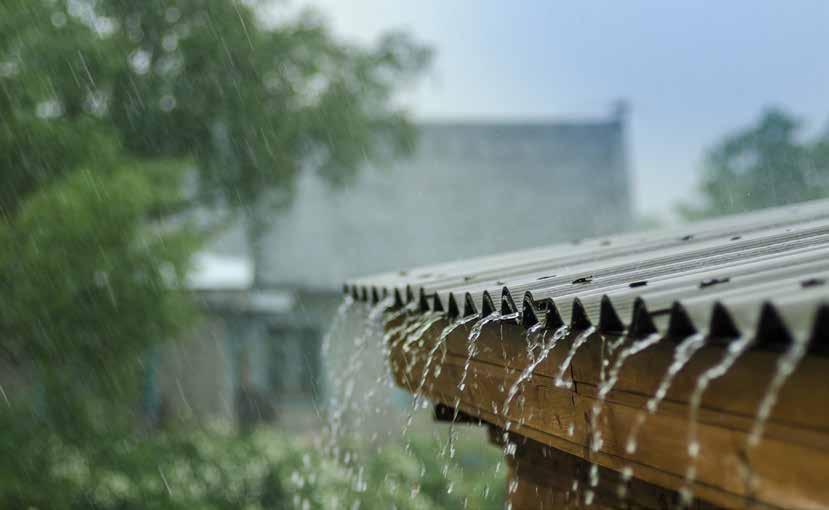
5 minute read
Leveraging our water infrastructure
from IMIESA July 2020
by 3S Media
South Africa is facing a water and sanitation infrastructure backlog of R900 billion.
Danielle Petterson
Advertisement
talks to Benoît Le Roy, CEO of the South African Water Chamber, about leveraging our existing infrastructure.
The National Water and Sanitation Master Plan (NW&SMP) paints a grim picture of South Africa’s water and sanitation infrastructure, citing insufficient infrastructure maintenance and investment as a contributing cause.
According to the master plan, approximately 56% of municipal wastewater treatment works (WWTWs) and approximately 44% of water treatment works in the country are in a poor or critical condition and in need of urgent rehabilitation and skilled operators.
Le Roy points out that – with the exception of a few cases, such as the much-publicised Emfuleni sewage crisis – most of South Africa’s infrastructure is still operational and salvageable through maintenance and refurbishment.
If this can be achieved, South Africa can leverage its existing infrastructure to ensure delivery of water and sanitation services at a fraction of the price of replacing that infrastructure.
Reduce, reuse, augment
“There is a lot we can do without installing new infrastructure. As a country, we like to install new and forget about the old, but we need to follow the three key themes in the NW&SMP: reduce wastage, reuse water, and augment our supply,” says Le Roy.
South Africa’s non-revenue water (NRW) average sits at 41%. Of this, 35% is lost through leakage. Shockingly, municipalities lose about 1 660 million m³ per year through NRW. At a unit cost of R6/m³, this amounts to R9.9 billion each year.
While NRW is a global problem, it is particularly high in South Africa. Currently, the best megacity in the world, Tokyo, boasts only 2% NRW. The standard for most European cities is somewhere between 20% and 25%. Locally, the City of Cape Town boasted an NRW figure of just 15% pre-drought. In South Africa, Cape Town has been the only city strongly driving NRW reduction, largely through pressure management.
Using Cape Town as an example, Le Roy believes that South Africa can realistically reduce NRW to around 25% in the short term, working towards a target of 15% in the long term.
“To replace our networks will take about two decades, and there are very few cities in the world who can afford to do that. Instead, we can measure demand and supply, manage pressure and use machine learning as we replace the more vulnerable infrastructure,” he says.
While driving NRW reduction is difficult from a purely economic point of view, reuse is a very bankable option. South Africa has been practising indirect reuse for decades. However, the potential for direct reuse is vast and can largely be achieved with existing infrastructure. With direct reuse, no additional transmission and distribution
DID YOU KNOW?

infrastructure is required. According to Le Roy, this represents the low-hanging fruit, especially since the technology is mature and already in use in places.
Then comes augmentation. With our freshwater supplies largely exhausted, he argues for desalination. Although this is not a popular option in South Africa, Le Roy believes that if implemented at a large scale, desalination is feasible, which has been proven in Australia. Technological developments, driven by renewable energy and improvements in membranes, are driving down the costs.
The price of water
While many sector professionals argue that water in South Africa is too cheap, Le Roy argues the opposite.
“We are paying for our leaks. You could argue that the price of water is inflated by 35% to 41%. If you halve the losses in the system, the price of water should come down 20% to 30%. And that’s just driving one aspect of the distribution network’s inefficiencies,” he says. According to Le Roy, South Africa’s price of water, not adjusted in terms of GDP per capita, is the same as Central Europe, which he considers very high. “We cannot attract industrial activity in our country with high water and electricity prices.
“We have built inefficiencies into the whole water supply chain. We as the SA Water Chamber believe that we need to shift from cost plus pricing to zero-based costing – and the custodian of that should be an independent water regulator.”
Governance and accountability
The SA Water Chamber has been calling for the establishment of an independent water regulator for some time.
Currently, the Department of Human Settlements, Water and Sanitation is the regulator of the sector, custodian of our water resources, operator of bulk water facilities, and owner of the water boards. “You can’t be referee and player – it is not effective,” stresses Le Roy.
He believes there is a lack of accountability in the sector. “An independent water regulator wouldn’t be the silver bullet, but it would go a long way to putting the various stakeholders into silos and making them responsible. And this cannot take years to implement or we’ll be in trouble,” he says.
Le Roy believes that an independent regulator will serve as a good tool for introducing governance so that we can leverage our existing infrastructure, bolt on new solutions and commercialise – not privatise – the water sector. This commercialisation means attracting private funding and reducing the burden on municipalities by allowing private companies to manage, operate and maintain our water infrastructure under contract.
If the private sector doesn’t invest, our infrastructure will collapse completely, says Le Roy. But private sector involvement requires policy, contracting and regulatory certainty, which should all be driven by an independent regulator.
The SA Water Chamber has engaged widely with government around the establishment of an independent regulator, which would act similarly to Nersa. Salga has bought into the concept, and Le Roy reports that national government has been receptive. However, getting the various stakeholders across departments aligned is a challenge.
“There is a willingness, which is really encouraging. I believe there is a lot of hope, but we need to persevere and push hard,” he says.
Le Roy believes the way forward is for the public and private sectors to continue to engage and collaborate at an accelerated rate. While the Covid-19 pandemic has diverted some resources away from these issues, it has put water at the forefront and highlighted the inadequacies.
“People are starting to understand that our water and sanitation is in a very bad state and we have no choice but to fix it. We need to get going.”










